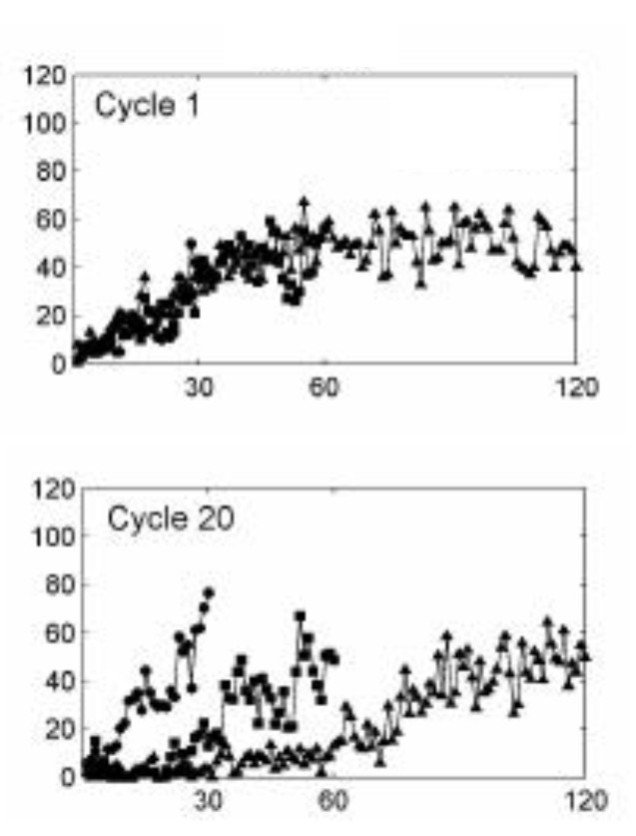|
Marcelo S. Caetano |
|
|
Graduate Student Office: Hunter Lab 310 Phone: (401) 863-3979 / Fax: (401) 863-1300 |
|
|
The fact that one can predict the behavior of an organism in a simple environment with fairly good precision has amused me in the past few years. The bridge between facts from observation of behavior and predictions from mathematical models has become more solid and broad. I have been currently working on both sides of this bridge by conducting research on the determinants of stimulus control in rats trained with fixed interval schedules of reinforcement. On one side, I have been collecting facts about the dynamics of interval discrimination and performance at steady state; and on the other, applying Packet Theory – a mathematical model of behavior – to the facts collected. One of the highlighted facts of my work is the importance of the observation of behavior of individual animals on single trials, as opposed to the use of more summarized measures. This atomistic style has brought to my attention phenomena that would otherwise pass unnoticed, such as the different strategies that a rat may use to anticipate the time of reinforcement in a fixed interval schedule of reinforcement. Another line of research on which I have been involved is the use of behavior (a response) as a time marker in timing tasks. Extensive work has been done with visual and auditory stimuli as time markers, and I am currently interested in investigating the role of an animal's response (its own behavior) in the ability of a rat to time intervals. Finally, as a former singer/lead guitarist in a Brazilian Pop/Rock band, I have a passion for music and I cultivate the habit of going to good concerts and listening to good music. Although seldom, it is still possible to find me sometimes playing my now rusty acoustic guitar. |
|
|
Fast daily adjustment to the time of food availability: Response rate as a function of time since the onset of a stimulus that is varied daily in length (30-, 60-, or 120-s) shown in the beginning of an asymptotic session (cycle 1), and in the end of the session (cycle 20). |
|
|
Recent Publications Caetano, M. S., Guilhardi,
P., & Church, R. M. (2007). Differences between simultaneous and
blocked training detected by a transfer test. Behavioural Processes,
75 (2), 176-181.
|
|
|
|
|

